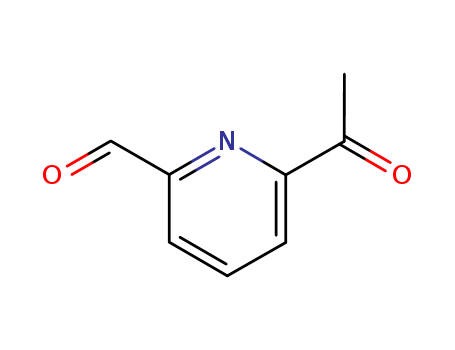- Chemical Name:6-Acetylpyridine-2-carbaldehyde
- CAS No.:20857-21-0
- Molecular Formula:C8H7NO2
- Molecular Weight:149.149
- Hs Code.:2933399090
- DSSTox Substance ID:DTXSID00596817
- Wikidata:Q82492172
- Mol file:20857-21-0.mol
Synonyms:20857-21-0;6-acetylpyridine-2-carbaldehyde;6-acetyl-2-pyridinecarboxaldehyde;2-Pyridinecarboxaldehyde, 6-acetyl- (9CI);2-Pyridinecarboxaldehyde,6-acetyl-;6-acetyl-2-Pyridinecarbaldehyde;SCHEMBL9297728;DTXSID00596817;VBDAIIKYGFAYGD-UHFFFAOYSA-N;AKOS006304751;A814977





